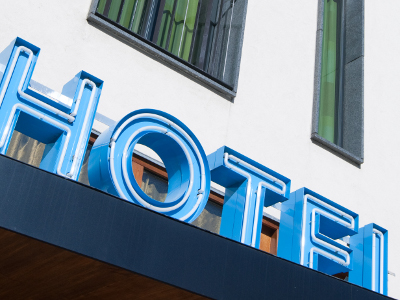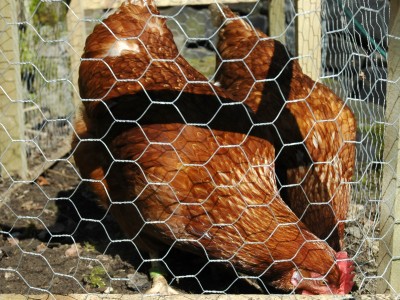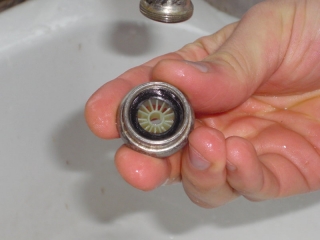Are you still as frugal and green when you’re away from home?
This question has been buzzing around in my head for a few weeks but a comment on someone else’s blog has driven it to the surface:
are you still as frugal and green while you’re out & about or on holiday as you are at home?

A few miscellaneous ideas that created the initial buzz:
- At home, I rarely use hot water to wash my hands/face (the boiler takes a few minutes to heat up) but away from home, in semi-public toilets, at work or in hotels etc, I almost always use the on-demand hot water every time, whether I really need it or not.
- At home, we have a recycling bin and a compost bin in the kitchen, so recycle & compost as much as possible. Away from home, where there aren’t convenient recycling/compost bins such as at work (we borrow rooms so can’t made demands) or in hotels, I just use the regular bin.
- When I’m staying in a hotel, I take more, longer showers/deeper baths than I do at home – before we got a good shower at home, hotel showers were a luxury activity, not just about getting clean!
- When I’m on holiday/having a day trip somewhere a bit different, I’m more likely to buy something I don’t need as a treat or souvenir (not a tacky plastic Eiffel Tower per se but, for example, the £17 of yarn I bought in Whitby the other month or similar amount of yarn I bought in Madrid when we were there for a conference in 2009). This is also the nature of the comment I read on the other person’s blog: essentially “frugal goals be damned, you were on holiday”. I don’t generally have a problem with proper holiday treats – especially of this productive rather than purely novelty nature – but if it extends to all days out, which it has done with me in the past, it can get very expensive for little reason.
I find it strange how careful am I concerning energy/water usage at home etc, then I leave home and I’m Little Ms Wasteful! I’m not all bad – if I have a choice in the matter, I don’t leave lights/heating/air-con on when I’m out of a room at work or in a hotel etc – but my naughties are definitely something to address now I’ve consciously identified them though.
Are you as good away from home/on holiday/visiting friends & family as you are in your normal day-to-day home life? If you are, how do you deal with the lack of recycling/composting facilities etc?
I’d love to hear your thoughts and/or examples of this!
Read MoreYesterday’s consumables and their packaging
Last week, I saw this post over at Not Dabbling In Normal as part of Real Clean month over there – Xan had listed every cleaning product she’d used before 7am – noting any packaging involved and the presence of synthetic chemicals where applicable. She does a lot of cleaning before 7am!
I thought it was a really interesting exercise because it’s so easy to become blind to the things we do/use on a daily basis – and you can’t take steps to cut back from an environmental/chemical-reduction or frugal point of view until you know what you’re using. I couldn’t repeat the exercise exactly (because I’m not generally awake by 7am let alone having done any cleaning!) so I decided to track all the consumables I personally use/waste I produce during the day, so see where I can make changes.
Yesterday was a slightly unusual day – I went to the theatre in the evening (so I didn’t have a proper meal and wore a little make-up — very unusual for me!) and I didn’t actually do any cleaning/laundry except for washing some cutlery at lunchtime. I’m going to repeat this exercise offline on random different days over the next fortnight to hopefully get fuller picture – then I’ll use that information to cut down. I can already see some areas where I could easily reduce our contact with synthetic chemicals and packaging (eg, make liquid hand soap, use a washable dish cloth, make more of our own cakes/sweet treats, and reassess my face “cleansing” routine).
All the consumables/waste I produced yesterday
In order of use – grouped together where applicable to make it easier to read and I’ve only listed things the first time they were used.
Things in bold and italics were single-use items, immediately heading to landfill. Things in italics were multiple-use/bulk-bought items that would eventually even up in landfill when the pack/bottle was finished.
Everything is shop-bought unless specified otherwise.
Read MoreA cracking start to Spring
Oh what a beautiful day!
I know yesterday was officially the first day of Spring but it was a usual sit-at-computer rush-off-to-rehearsal day for me, whereas I got out in the Spring sunshine today. I’d decided to have a day away, or at least largely away from my computer – and couldn’t have scheduled it better weather-wise.
We had our first breakfast al fresco – sitting on the sun trap of a balcony. The idea of having breakfast on a balcony was one of the things that sold the house to us – the balcony faces into the woods and it’s a gorgeous view, even with the trees still leafless:
(The two horizontal strips of green at the bottom of the photo are just over the stream at the bottom of the garden – it’s wild garlic. There is *so much* wild garlic in the woods – and thankfully plenty in places not often frequented by dogs.)
After breakfast, I cleaned out the chicken coop and since I was working hard, I thought some of the chickens should be busy too – I put Lime & Green to work in the portable run I made the other week, weeding one of the veg beds. They worked like troopers…
Except for when they got distracted by a dried leaf caught in the wire.
(By the way, since it was sunny, both cats wandered down into the garden, saw the girls in the portable run, thought their luck was in so crouched down – then realised the chickens were a. bigger than them b. had sharp beaks and c. had bigger claws so slunk off to continue their sun worship elsewhere. It was funny to watch them go through the exact same actions.)
Read MoreZero waste pets: the chickens
Back in July, I wrote about our efforts to make our pets zero waste, starting with the dog. Switching between food types recently has made me think about the chickens and waste.
Food
We buy layers pellets in 20kg or 25kg bags. These are usually plastic sacks, which can, for now be reused around the garden for weed barriers, storage etc. I suspect we’ll reach saturation point on that though, so we’ll have to find some other way to reuse or recycle the bags. (Some food, for example, the Golden Yolk stuff I mentioned in the consumption post, comes in thick paper sacks. That is obviously better from a zero waste point of view, although I’d worry about it in the damper months.)
Treats
At the moment, now the garden is mostly sleeping, their main treats are corn (20kg plastic sacks, which last for ages and ages) and kitchen scraps.
The latter is interesting from a zero waste point of view – they’re actually helping reduce our waste by eating scraps and leftovers. Admittedly most of the stuff they’re getting would normally go into the compost so it’s not reducing landfill, but it’s making better use of it.
Read MoreWater-saving: how-to fit water-saving aerators to taps
A few weeks ago, I found out that our local water company Yorkshire Water was giving away some water-saving gizmos to its customers. Our water isn’t metered here so we’re not interested in saving water to save money, but more interested in it from a green point of view — and I guess getting into the habit in case we ever do get a water meter fitted.
As well as a shower aerator, a pretty pointless thing for the toilet cistern and a four-minute shower timer (which I’ll use for eggs), we got two tap aerators and a fitting tool.
We fitted one of the tap aerators in the kitchen yesterday and we’re already noticing the difference. It doesn’t feel like we’re getting less water when we’re washing our hands etc but it takes considerably longer to fill a glass/the kettle – showing how much it’s reduced the water flow.
It was really easy to fit the aerator – you don’t need to turn off the water (well, you do at the tap, but not at the stop cock) and we didn’t even need to use the tool provided (I’m guessing it was a wrench type thing to unscrew tight bits).
Let’s start with a shot of water running from the existing tap – for comparison.
Start by unscrewing the very end bit of the tap. You might need the tool or a wrench if it’s tightly attached. Ours screwed off easily with just a bit of a manly grasp (not a euphemism).
Read More








